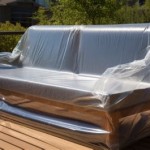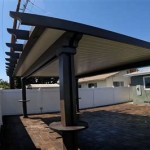How to Get Moss Off Your Brick Patio Pavers in Ontario
Moss growth on brick patio pavers is a common issue in Ontario, particularly in areas with high humidity and ample shade. While moss can add a rustic aesthetic to some landscapes, excessive growth on patio pavers can create a slippery surface, posing a safety hazard. Furthermore, it can trap moisture against the brick, potentially leading to accelerated deterioration and structural damage over time. This article provides a comprehensive guide to effectively removing moss from brick patio pavers in Ontario, focusing on practical methods, preventative measures, and considerations specific to the local climate.
The presence of moss indicates certain environmental conditions that favor its growth. These include consistent moisture, shade, and acidic soil. Ontario's climate, with its distinct seasons and periods of increased rainfall, often provides the ideal conditions for moss to thrive on outdoor surfaces. Addressing the underlying causes of moss growth, along with implementing effective removal strategies, is crucial for long-term success.
Understanding Moss and its Impact on Brick Pavers
Mosses are non-vascular plants that reproduce through spores. They thrive in damp, shaded environments and can quickly colonize porous surfaces like brick. The porous nature of brick pavers allows moss to anchor itself firmly, making removal a challenging task if left unaddressed. The rhizoids, root-like structures that attach the moss to the surface, penetrate the small crevices and pores of the brick, making simple sweeping ineffective.
The detrimental effects of moss on brick pavers extend beyond aesthetics. Moss can trap moisture against the surface of the brick, contributing to freeze-thaw damage during Ontario's harsh winters. When water trapped within the brick freezes, it expands, potentially causing cracks, spalling (surface flaking), and overall weakening of the paver structure. Furthermore, the constant dampness fostered by moss can create an environment conducive to the growth of other organisms, such as mold and algae, further accelerating the deterioration process.
Different types of moss may colonize brick pavers, each with varying degrees of adhesion. Some mosses form a loose, superficial layer that is relatively easy to remove, while others develop a more tenacious grip, requiring more aggressive cleaning methods. Identifying the type of moss present can inform the selection of the most appropriate removal technique.
Effective Methods for Removing Moss from Brick Pavers
Several methods can be employed to remove moss from brick patio pavers, ranging from manual techniques to chemical treatments. The choice of method should be guided by the severity of the moss infestation, the type of brick used, and environmental considerations.
Manual Removal: This is often the first line of defense, particularly for light to moderate moss growth. Tools such as stiff-bristled brushes, putty knives, or specialized moss removal tools can be used to physically scrape and dislodge the moss from the brick surface. It is important to choose tools that will not damage the brick itself. A plastic putty knife is less likely to scratch the brick compared to a metal one. For larger areas, a long-handled brush can reduce strain on the back. Thoroughly sweeping the area after scraping will remove loose debris and spores.
Pressure Washing: This method utilizes high-pressure water to blast away the moss. While effective, caution must be exercised to avoid damaging the brick pavers or dislodging the joint sand. Using a wide-angle nozzle and maintaining a safe distance from the surface (at least 12 inches) can help prevent damage. It is crucial to refill the joints with sand after pressure washing to maintain the structural integrity of the patio. Pressure washing is most effective when combined with other methods, such as pre-treating the moss with a cleaning solution.
Household Cleaning Solutions: Several household cleaning solutions can be effective in killing moss. Solutions containing bleach, vinegar, or dish soap can be applied to the affected areas. A mixture of water and bleach (1 part bleach to 10 parts water) can be sprayed onto the moss. Allow the solution to sit for 15-20 minutes before scrubbing with a stiff-bristled brush and rinsing thoroughly with water. White vinegar can also be used undiluted or diluted depending on the severity of the moss. Dish soap, mixed with water, can help loosen the moss and make it easier to scrub away. Always test the solution on a small, inconspicuous area first to ensure it does not discolor or damage the brick.
Commercial Moss Removers: There are numerous commercial moss removal products available. These products typically contain chemicals such as ferrous sulfate or zinc sulfate, which are effective in killing moss. Always follow the manufacturer's instructions carefully when using these products. Apply the product evenly over the affected area and allow it to sit for the recommended time. After the moss has died, it can be easily removed with a brush or pressure washer. When using commercial moss removers, it's important to consider their environmental impact and choose products that are biodegradable and safe for use around plants and pets.
Preventative Measures to Inhibit Moss Growth
Preventing moss growth is just as important as removing it. Implementing preventative measures can significantly reduce the need for frequent cleaning and protect the brick pavers from damage. Several strategies can be employed to create an environment that is less conducive to moss growth.
Improving Drainage: Proper drainage is essential for preventing moss growth. Ensure that the patio is properly graded to allow water to drain away from the surface. Clear any debris, such as leaves and twigs, from the patio to prevent water from pooling. Consider installing drainage systems, such as French drains or permeable pavers, to improve drainage in areas prone to water accumulation.
Increasing Sunlight: Moss thrives in shade. Pruning trees and shrubs that overhang the patio can increase sunlight exposure, making it less hospitable for moss. Strategically removing branches or thinning out dense foliage can allow more sunlight to reach the patio surface. If possible, consider relocating potted plants or other structures that create shaded areas.
Maintaining Proper Soil pH: Moss prefers acidic soil. Applying lime to the soil around the patio can help raise the pH level, making it less favorable for moss growth. Soil testing kits are readily available and can be used to determine the pH level of the soil. Follow the instructions on the lime product for proper application rates.
Using Polymeric Sand: Polymeric sand is a specialized type of sand that is used to fill the joints between pavers. It contains additives that bind the sand particles together, creating a more durable and weed-resistant surface. Polymeric sand also helps to prevent moss from growing in the joints between the pavers. Apply polymeric sand according to the manufacturer's instructions, ensuring that the joints are completely filled and compacted.
Regular Cleaning and Maintenance: Regular cleaning and maintenance are essential for preventing moss growth. Sweep the patio regularly to remove debris and prevent water from pooling. Periodically scrub the patio with a brush and mild detergent to remove dirt and grime. Inspect the patio regularly for signs of moss growth and address any issues promptly. Early intervention can prevent small infestations from becoming major problems. Consider applying a sealant to the brick pavers to protect them from moisture and staining. Sealants can also help to prevent moss from adhering to the surface.
By understanding the factors that contribute to moss growth and implementing effective removal and preventative measures, homeowners in Ontario can maintain their brick patio pavers and enjoy a safe and aesthetically pleasing outdoor space. Adapting strategies to account for the specific conditions of the site, including sunlight exposure, drainage, and soil type, will yield the best results in both short-term removal and long-term prevention.

How To Clean Your Patio And Kill Moss Red

Get Rid Of Patio Moss The Paver Savers Northampton Pa

6 Tips On Removing Moss From Pavers Aviara

How Do I Remove Moss Algae From Bricks Paving Clay Brick Association Of Southern

How To Remove Moss From Pavers A Handy Guide

How To Remove Moss From Paving And Patios In 30 Minutes Daily Express Us

How To Kill And Prevent Sidewalk Patio Moss

Cleaning How Do I Remove Moss From An Outdoor Brick Walkway Home Improvement Stack Exchange

How To Remove Moss From Pavers A Handy Guide

How To Get Rid Of Moss Growing On Pavers Prevent It From Coming Back
See Also








